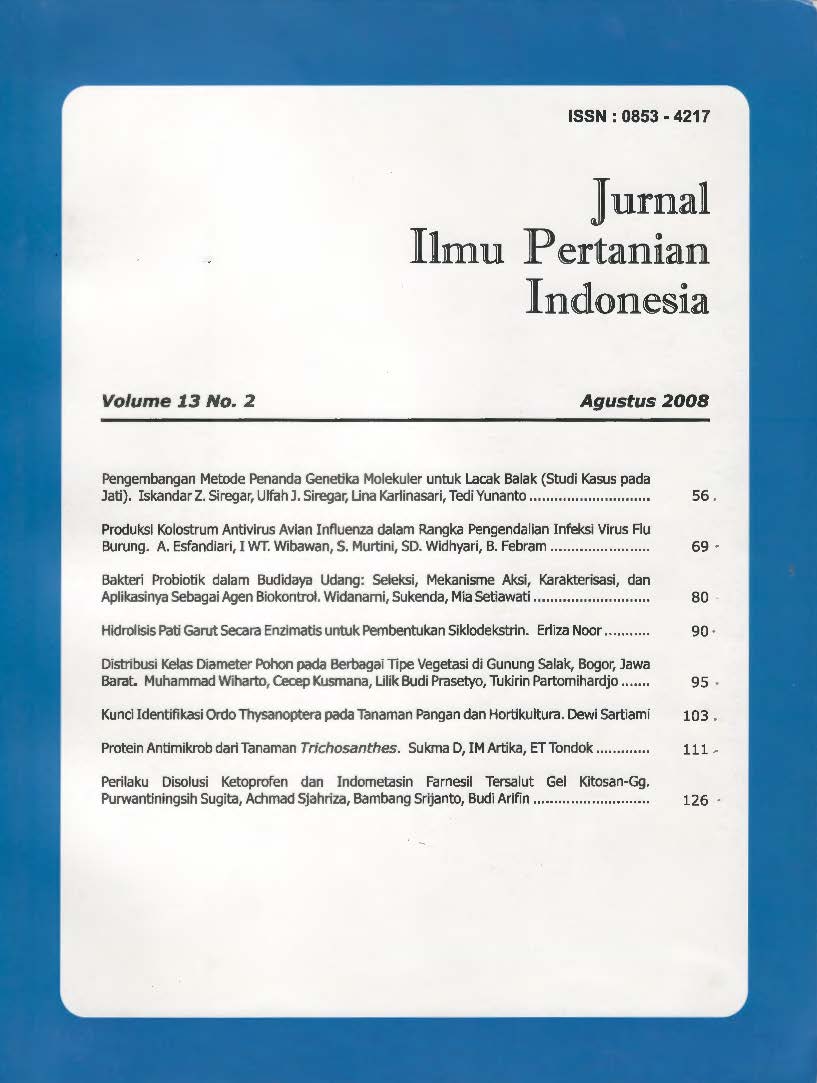Produksi kolostrum antivirus avian influenza dalam rangka pengendalian infeksi virus flu burung
Abstract
This experiment was conducted to study the prospect of bovine colostrum utilization to produce specific antibody as passive immunotherapy against avian influenza. Pregnant Frisian Holstein cows were injected with commercial killed Avian Influenza (AI) vaccine given double doses subcutaneously three times every two weeks. Prior to vaccination, the cows were given immunomodulator 0.1 mg.kg-1 BW administered orally for three days. The animals then were injected by inactive H5N1 antigent without adjuvant intravenously to meet the dose of 104 HAU. Blood samples were collected to detect anti AI antibody using Enzyme Linked Jmmunosorbent Assay technique. Colostral samples were analysed to detect antibody against AI using Haemagglutination Inhibition technique. IgG stabilities were tested against enzyme, pH, and spray dried prosessing with inlet dan outlet temperature of 1400C and 520C.repectively. The colostral lgG efficacy on neutralizing H5N1 virus activity was determined in vitro (by using Serum Neutralization Test and protective titer measurement) and in ovo (challenge test by using Embryonic Chicken Egg). The result indicated that serum antibody against H5N1 was detected one week after the second vaccination. Titer of colostral antibody against H5N1 was high (28 ). Biological activity of colostral IgG remain stable at pH 5-7 and after spraying-drying prosessing, but decreased after treatment by trypsin and pepsin enzymes. The neutralization test showed that the fresh and spray dried colostral IgG against H5N1 were able to neutralize 107 EID50 AI virus H5N1 with neutralization index of 1.1 and 1.0, respectively. In conclusion, pregnant Frisian Holstein cows injected with commercial killed Avian Influenza (AI) vaccine were able to produce colostral lgG against AI H5Nl.
Keywords: avian influenza, bovine colostrum, lgG, passive immunotherapy
Downloads
This journal is published under the terms of the Creative Commons Attribution-NonCommercial 4.0 International License. Authors who publish with this journal agree to the following terms: Authors retain copyright and grant the journal right of first publication with the work simultaneously licensed under a Creative Commons Attribution-NonCommercial 4.0 International License. Attribution — You must give appropriate credit, provide a link to the license, and indicate if changes were made. You may do so in any reasonable manner, but not in any way that suggests the licensor endorses you or your use. NonCommercial — You may not use the material for commercial purposes.



















